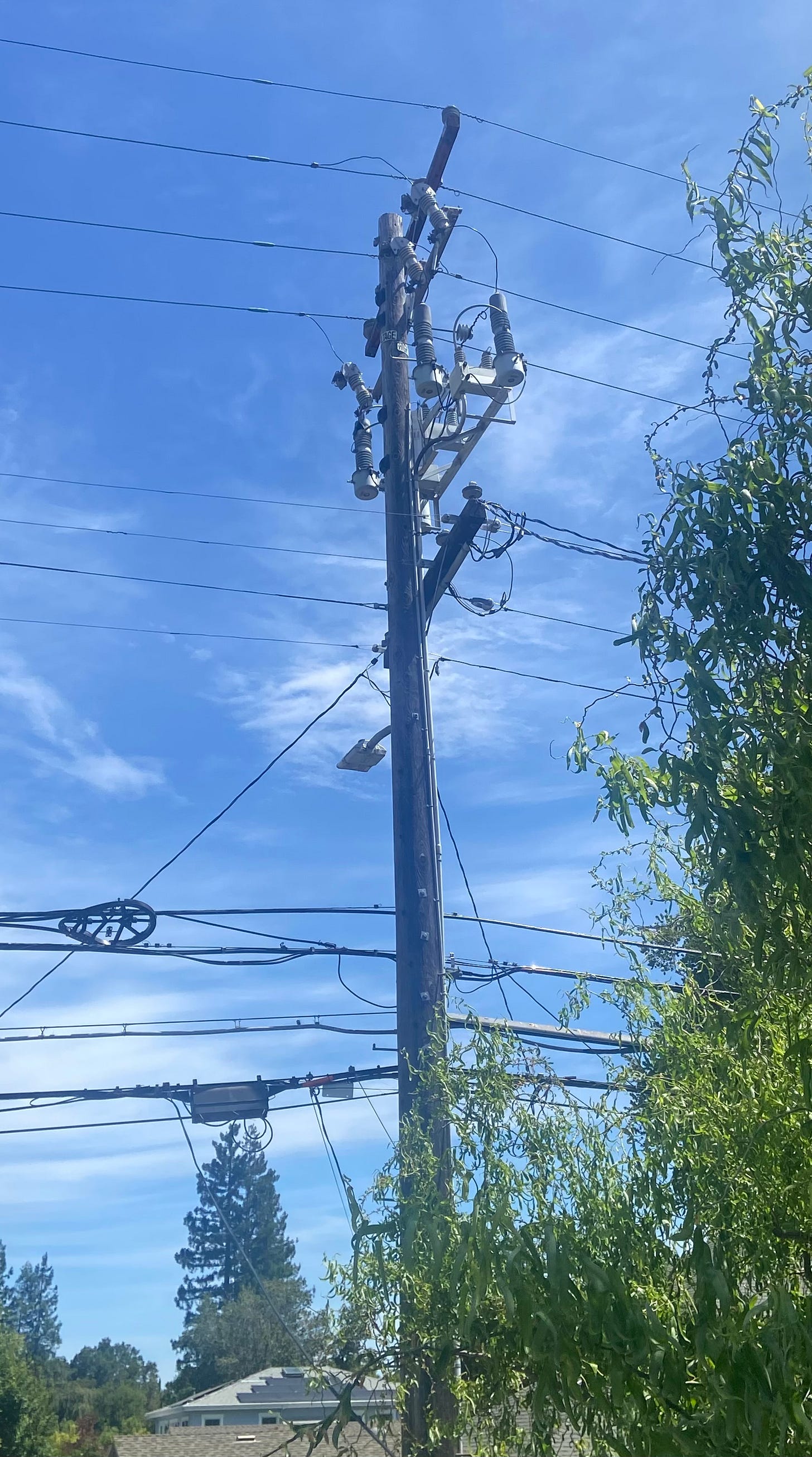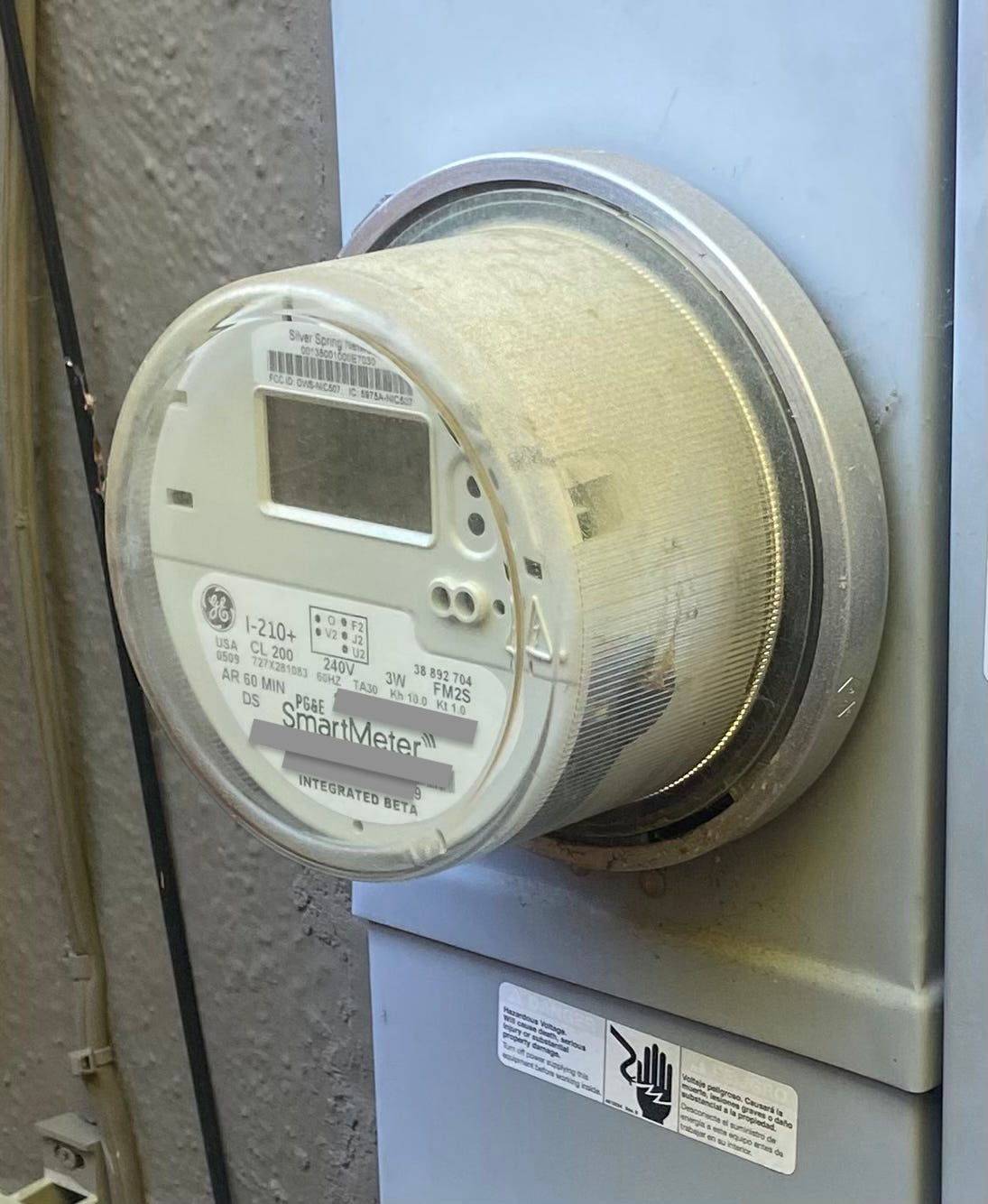My Electric Bill - PG&E and PCE
Understanding my NEM bill was harder than I expected. Part 1.
We installed Solar Panels a year ago and it took me a while to fully understand all the nuances of our bill. I’m writing this post because “the best way to learn something is to explain it to somebody else”; I hope you will find the post useful.
As the post grew up in size I ended up splitting into two. Part I covers the interaction between PG&E and PCE; Part II explains the solar exports under NEM 2.0
Our Household in a Nutshell
Our household is in a territory served by Pacific Gas and Electricity (PG&E) and Peninsula Clean Energy (PCE). We charge our Electric Vehicles at home using the EV2-A tariff. We have solar Panels installed under NEM 2.0 tariff. We do not have any battery storage.
The rest of this note explains what all this means and how our monthly and year bill works.
PG&E and PCE
IOU and CCA
We live in the San Francisco Bay Peninsula and our electricity comes through a combination of PG&E, an Investor Owned Utility, and PCE, a Community Choice Aggregator (see IOUs, CCAs and POUs).
Our electrical bill comes from PG&E, the largest for-profit electric utility in the USA. PG&E also owns the utility poles, the distribution substations and the transmission lines. If there is an issue with a power line, we contact PG&E.
The electricity we use is generated by resources under contract with, or owned by PCE. PCE is a CCA, a community-controlled, not-for-profit, joint powers agency serving the San Mateo County and the City of Los Banos. CCAs were created to give customers the ability to choose their energy sources.
PG&E as a Retailer
PG&E is our retailer. They send us a consolidated bill using data from PG&E and PCE. PG&E’s website gives us access to all bills, production and consumption. PG&E also tracks credits which can arise from multiple sources, like the bi-annual California Climate Credit, or excess exports from Solar Generation (more on that in Part II).
SmartMeters
The electricity is delivered from the grid to our house via a 200A panel that it is metered continuously through a Smart Meter using AMI. The SmartMeter tracks imports and exports separately and it sends the details back to the utility through a mesh network or a cellular network.
PG&E aggregates the information in 15 minute intervals, available from their “Green Button”.
Volumetric and Fixed Charges
Pretty much all the charges for electricity in the current setup are “volumetric”. This means the cost is computed by multiplying the consumption (kWh) by a rate ($$/kWh). The more you consume, the more you pay.
Our PG&E bill includes a non-volumetric charge: the Minimum Delivery Charge, a fixed per-day charge. The MDC interacts with solar exports. I’ll revisit all these charges in Part II.
Note: the CPUC has approved a new fixed charge (IGFC). That was a very controversial decision and it is a topic worth of a separate post.
Generation, Transmission and Distribution, and more
The payments to PCE cover generation costs and use a PCE-specific volumetric rate.
The PG&E volumetric rates cover what is described as transmission and distribution costs. They include:
Transmission of electricity through their transmission lines
Distribution of electricity through their distribution lines
Infrastructure needed for the above (step-up/step-down transformers, stations, substations, transmission towers, utility poles, meters, etc)
Service of the above, including tree trimming, messing with your utility poles, etc,
PG&E does not separate transmission from distribution and the rates do not take into account your location: the rates are aggregated across all the accounts in the PG&E territory, regardless of how close the accounts are to the source of energy, fire risk, etc.
The volumetric rates you find in a given tariff, like our EV2-A, also cover
The cost of generating the electricity.
PG&E has a monopoly on transmission and distribution over their territory, but customers have a choice on generation. If a customer chooses a CCA, then PG&E will get the electricity from your CCA, and the CCA will set the price of that electricity, not PG&E.
More Volumetric Costs
Your bill includes additional volumetric costs:
Non-Bypassable Charges (NBC) Net Usage Adjustment
State-Mandated NBC
A Franchise Fee Surcharge
A Power Charge Indifference Adjustment
The Franchise Fee Surcharge is so PG&E can pay our cities to use their streets. The Power Charge Indifference is described by PG&E as “it is intended to ensure that customers who switch to the CCA pay for energy that PG&E procured on their behalf, prior to their switch”.
I’ll revisit all these in Part II.
Time of Use Plans
The electricity (generation, transmission and distribution) rates in our EV2-A tariff varies with the time-of-use (TOU):
Off peak: midnight to 3pm
Peak: 4pm to 9pm
Partial peak: 3pm to 4pm and 9pm to midnight
The intervals do not change through the year but the actual rates can vary and sometimes a bill period will have more than one rate. The official EV2-A tariff is described in this 6-page document.
PCE Rates
We chose PCE for our generation because it gives us multiple benefits including cheaper rates and a very generous NEM program. A CCA has wide flexibility in how to structure their generation rates but PCE keeps things simple and follows the same hour structure as PG&E but with different rates.
The cost of the electricity generation is described in the PCE section of our bill. To determine their rates, PCE estimates how much they will have to pay for electricity in a year, adds their operating costs, and then they set the rate accordingly. PCE buys the electricity in long-term contracts. If PCE does a good job, they will have profits that they will reinvest in the community.
PG&E Rates
To find the PG&E distribution and transmission rates you have to look at the total (or bundled) rate (in our case the EV2-A) and subtract the generation portion. For instance, right now the aggregated peak rate is $0.62174/kWh. Peak generation rate is $0.20392/kWh so peak distribution and transmission rate is $0.41782/kWh. As you can see, most of your bill does not go into generating your electricity but rather into delivering it to your house.
The PG&E rates cover transmission, distribution, operational overheads, capital investments, payments due to older fires, deferred maintenance, etc. PG&E’s rates have to be approved by the CPUC as it is a monopoly. The CPUC guarantees a profit biased towards capital improvements - the more they invest, the larger their profit. As a for-profit corporation, profits go to their shareholders.
Enter Solar
The above provides an overview of how PG&E and PCE interact in our electrical bill. Part II deals with the nuances of exporting electricity - the original motivation for me starting to write this note.
Our house has rooftop solar panels that reduce our electrical consumption. Depending on the time of day and the weather, we may generate extra electricity and, since we do not have a battery, the extra energy is exported to the grid.
Solar and batteries change the energy generation and transmission model from a centralized model to a decentralized model. The industry and the regulators are still adjusting to this and the current rules reflect a transitional period.
Part II will show how all this works in our current bill.






